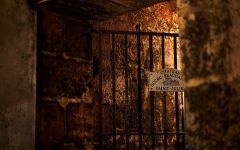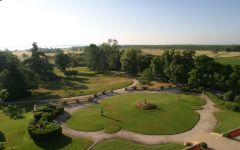Chateau Ducru-Beaucaillou (1.5 Liter Magnum) 1996
-
Wine
Spectator


Product Details
Your Rating
Somm Note
Winemaker Notes
Supple yet full-bodied, a typically fine Saint Julien that needs 8-10 years to reveal its rich and fruity, elegant flavors of cassis, vanilla and ripe blackberries.
Professional Ratings
- Wine Spectator
Other Vintages
2022-
Jeb
Dunnuck -
James
Suckling - Decanter
-
Robert
Parker
- Vinous
-
Wine
Enthusiast -
James
Suckling -
Robert
Parker - Decanter
-
Jeb
Dunnuck
-
Jeb
Dunnuck - Decanter
- Vinous
-
Wine
Enthusiast -
James
Suckling -
Robert
Parker
-
Jeb
Dunnuck -
Wine
Enthusiast -
James
Suckling - Decanter
-
Robert
Parker
-
Wine
Enthusiast -
Jeb
Dunnuck -
Wine
Spectator -
James
Suckling -
Robert
Parker - Decanter
-
James
Suckling -
Jeb
Dunnuck -
Wine
Enthusiast - Decanter
-
Robert
Parker -
Wine
Spectator
-
Jeb
Dunnuck -
James
Suckling -
Robert
Parker -
Wine
Enthusiast - Decanter
-
Wine
Spectator
- Decanter
-
Wine
Enthusiast -
Robert
Parker -
James
Suckling -
Wine
Spectator -
Jeb
Dunnuck
-
James
Suckling - Decanter
-
Jeb
Dunnuck -
Wine
Enthusiast -
Wine
Spectator -
Robert
Parker
- Decanter
-
Wine
Enthusiast -
James
Suckling -
Wine
Spectator -
Robert
Parker -
Jeb
Dunnuck
-
Wine
Enthusiast - Decanter
-
Wine
Spectator -
Robert
Parker -
James
Suckling
-
James
Suckling -
Jeb
Dunnuck -
Robert
Parker - Decanter
-
Wine
Spectator -
Wine
Enthusiast
-
Jeb
Dunnuck - Decanter
-
Robert
Parker -
Wine
Enthusiast -
Wine
Spectator -
James
Suckling
- Decanter
-
Jeb
Dunnuck -
Robert
Parker -
James
Suckling -
Wine
Enthusiast -
Wine
Spectator
-
Wine
Enthusiast -
Robert
Parker -
Wine
Spectator
-
Wine
Spectator - Decanter
-
Wine
Enthusiast -
Robert
Parker -
Wine &
Spirits
- Decanter
-
Robert
Parker -
Wine
Enthusiast -
Wine
Spectator -
James
Suckling -
Wine &
Spirits
-
Wine
Enthusiast -
Wine
Spectator -
Robert
Parker -
Wine &
Spirits
-
Wine
Spectator -
Robert
Parker -
James
Suckling -
Wine
Enthusiast -
Wine &
Spirits
-
Wine
Spectator
-
Wine
Enthusiast -
Wine
Spectator
-
Robert
Parker -
James
Suckling -
Wine
Spectator
-
Robert
Parker -
Wine
Spectator
-
Robert
Parker -
Wine &
Spirits
-
Wine
Spectator -
Robert
Parker
-
Robert
Parker
-
Robert
Parker
-
Robert
Parker
-
Wine
Spectator
- Decanter
-
Wine
Spectator -
Robert
Parker
-
Wine
Spectator -
Robert
Parker
-
Robert
Parker -
Wine
Spectator
-
Robert
Parker
-
Robert
Parker






Chateau Ducru Beaucaillou is named after the beautiful, large stones found in its unique wine-growing terroir. This exceptional ecosystem produces fine, elegant, tasty wines with a long finish - in short, archetypical Saint-Julien wines.
Perched on an exceptional site with incomparable views over the Gironde estuary, in the center of a hundred-year-old park, Ducru-Beaucaillou is a majestic, Victorian-style castle, which has, over time, become one of the great symbols of the Médoc. Unusual for Bordeaux, it is built directly above the barrel cellars, enveloping its owners, who have lived here for over sixty years.
Today, the estate is managed by the company Jean Eugène Borie SA, which is owned by Mrs Borie, her daughter Sabine Coiffe and her son Bruno-Eugène, CEO since 2003, the third generation of the Borie family to head the estate. There are very close links between this estate and the five families who have been its successive owners.

One of the world’s most classic and popular styles of red wine, Bordeaux-inspired blends have spread from their homeland in France to nearly every corner of the New World. Typically based on either Cabernet Sauvignon or Merlot and supported by Cabernet Franc, Malbec and Petit Verdot, the best of these are densely hued, fragrant, full of fruit and boast a structure that begs for cellar time. Somm Secret—Blends from Bordeaux are generally earthier compared to those from the New World, which tend to be fruit-dominant.

An icon of balance and tradition, St. Julien boasts the highest proportion of classed growths in the Médoc. What it lacks in any first growths, it makes up in the rest: five amazing second growth chateaux, two superb third growths and four well-reputed fourth growths. While the actual class rankings set in 1855 (first, second, and so on the fifth) today do not necessarily indicate a score of quality, the classification system is important to understand in the context of Bordeaux history. Today rivalry among the classed chateaux only serves to elevate the appellation overall.
One of its best historically, the estate of Leoville, was the largest in the Médoc in the 18th century, before it was divided into the three second growths known today as Chateau Léoville-Las-Cases, Léoville-Poyferré and Léoville-Barton. Located in the north section, these are stone’s throw from Chateau Latour in Pauillac and share much in common with that well-esteemed estate.
The relatively homogeneous gravelly and rocky top soil on top of clay-limestone subsoil is broken only by a narrow strip of bank on either side of the “jalle,” or stream, that bisects the zone and flows into the Gironde.
St. Julien wines are for those wanting subtlety, balance and consistency in their Bordeaux. Rewarding and persistent, the best among these Bordeaux Blends are full of blueberry, blackberry, cassis, plum, tobacco and licorice. They are intense and complex and finish with fine, velvety tannins.
